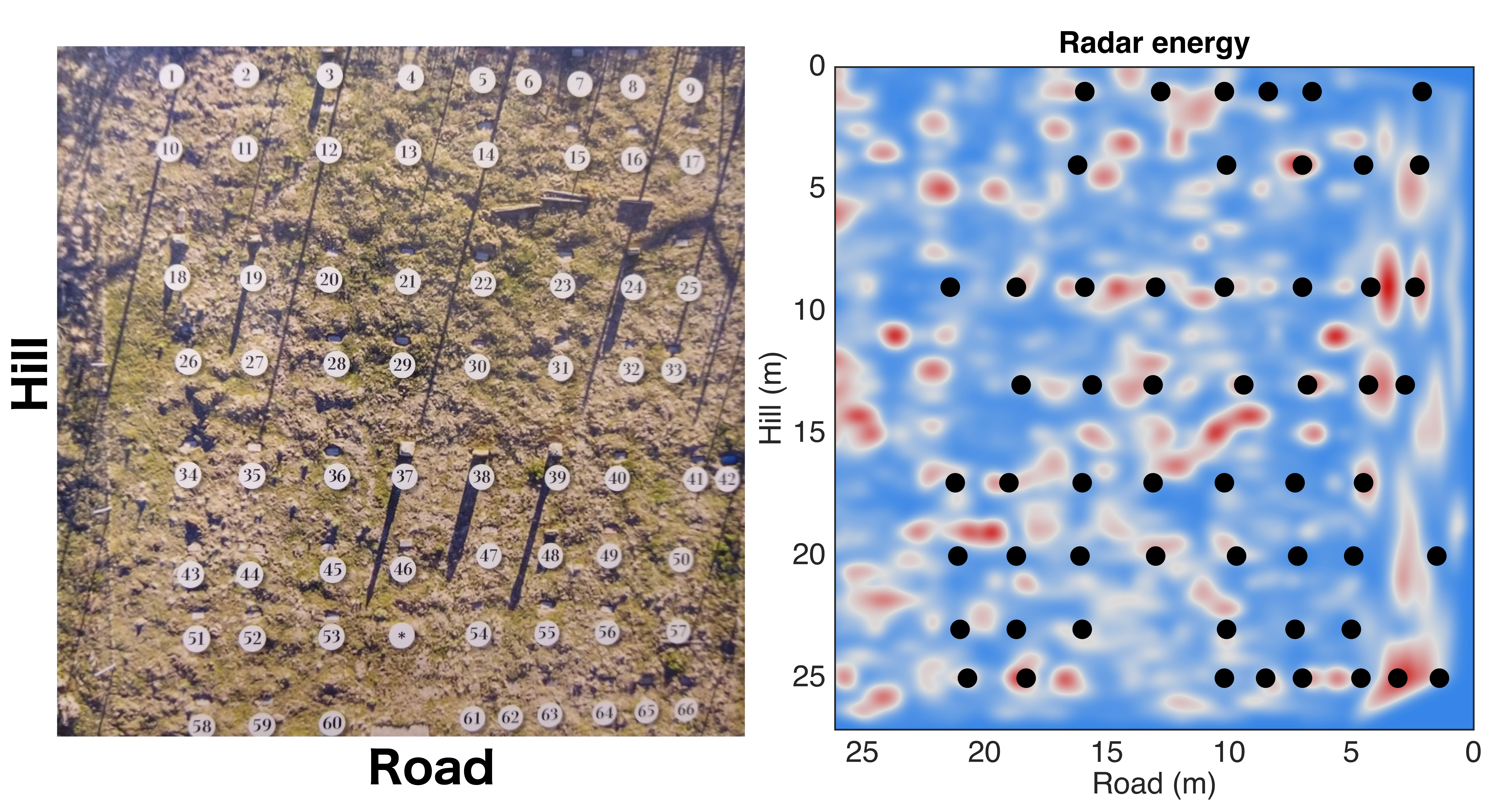Active source
Understanding material properties of the subsurface can help us find energy resources (i.e. oil, gas, geothermal), mitigate hazards, monitor CO2 sequestration sites, understand ground-water flow, map magma chambers and budget water availability.
Gerjoii
Gerjoii is: forward modeling of ground penetrating radar and electrical resistivity together with a novel 2.5d joint multi-parameter inversion algorithm that recovers electrical permittivity and conductivity of the subsurface from surface acquired radar and resistivity data. Included is a machine learning routine (PyTorch) for finding the weights needed for the inversion.
For a digested code-tour go here, for the code here.
Wave utils
Code suite for processing waveforms as recorded by receivers in the field. Features include: frequency domain filtering, beamforming analysis, frequency time analysis, multichannel analysis of surface waves, and virtual source gathers by seismic interferometry. Lives inside Gerjoii.
ER 2.5d inversion
Supports 2.5d inversion of ER data. Below is an example of an imaged alluvial aquifer.
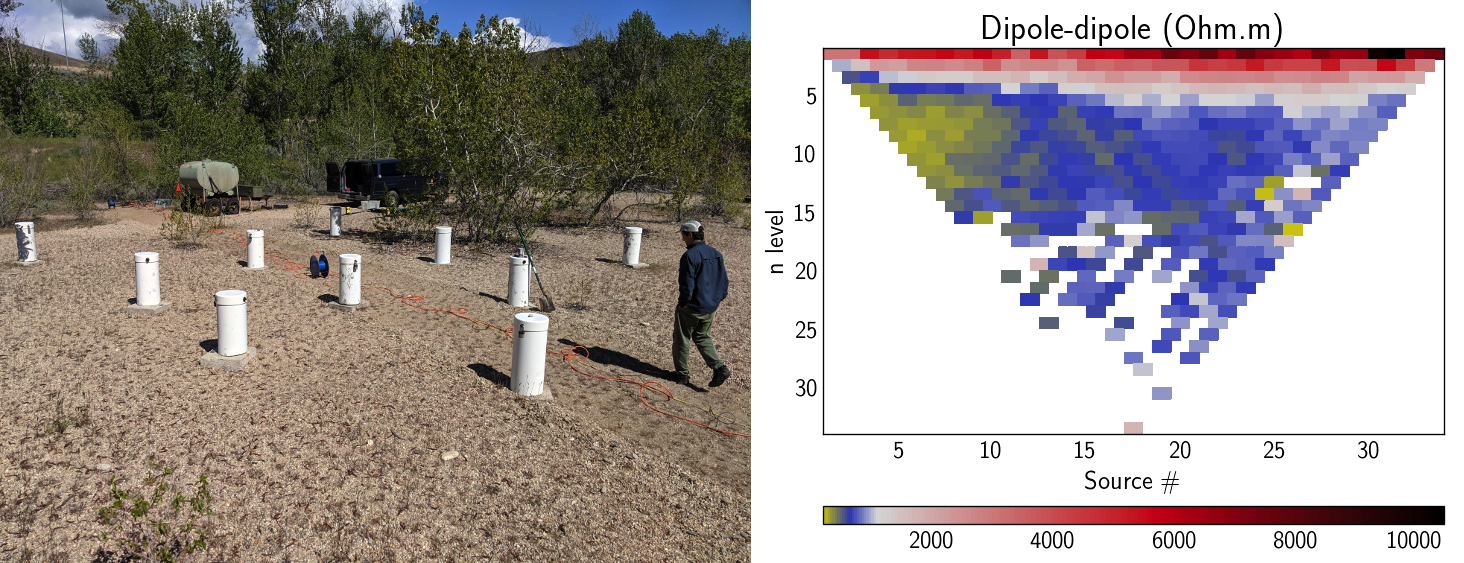
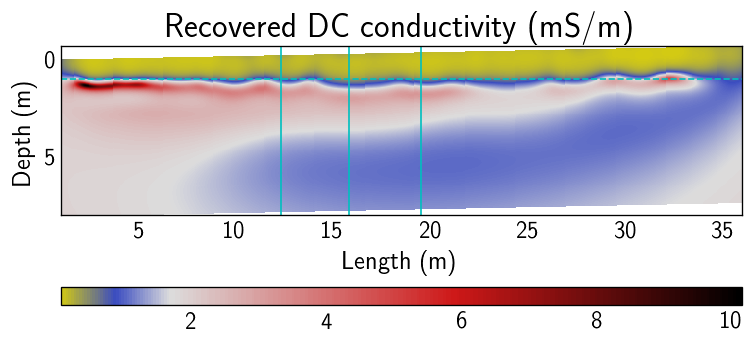
Red is where the ground-water is. Yellow is where dry sand lies. Dashed line is a 1m depth marker. Solid lines are borehole locations.
Radar on trees
Forward modeling of radar on trees. Left is the wavefield in the tree and right is the observed data.
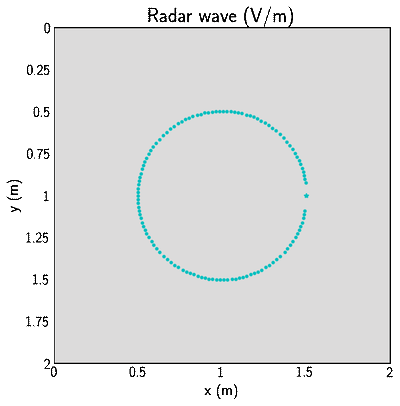
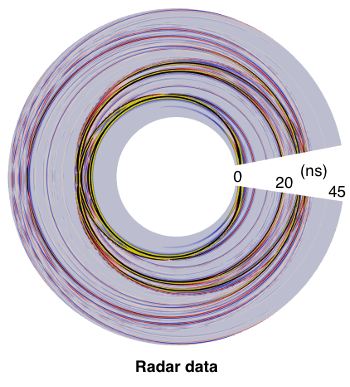
Finding graves
Every black dot represents a known grave marker from the image on the left.
